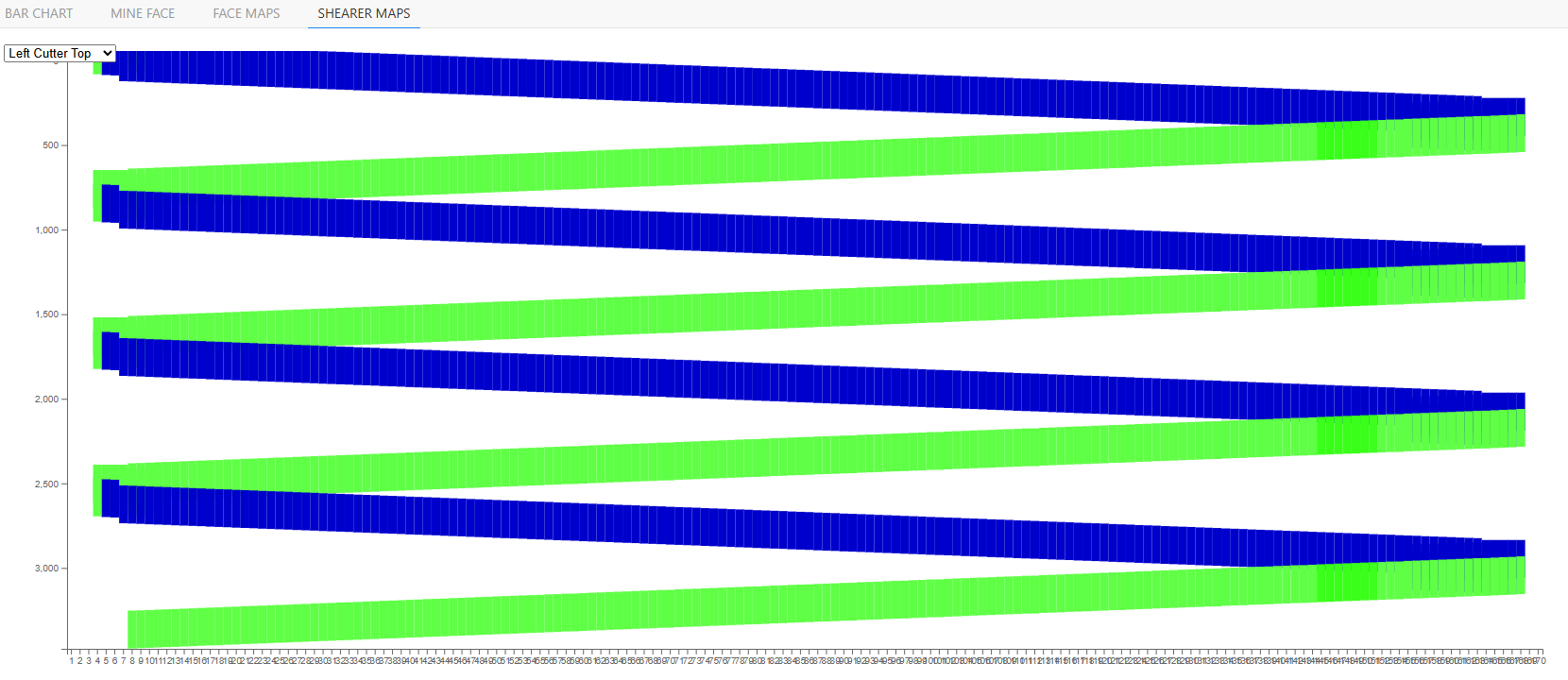This is an old revision of the document!
Shearer Maps
Face Maps are useful, but can often hide valuable information. They are also only relevant for information about roof supports. It's more complex if you want to monitor the shearer or capture values when the shearer passes.
Since the shearer may cross a single support multiple times in a single cut, face maps are often a poor choice if you want to analyse what the shearer has been doing.
Instead of a heatmap being made shear-by-shear, Shearer Maps instead paint the chart based on the current position of the shearer across the longwall face.
This lets you see what values were when the shearer passed that point. It also lets you understand how the shearer travelled and where pauses and delays can be found.
